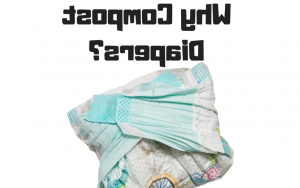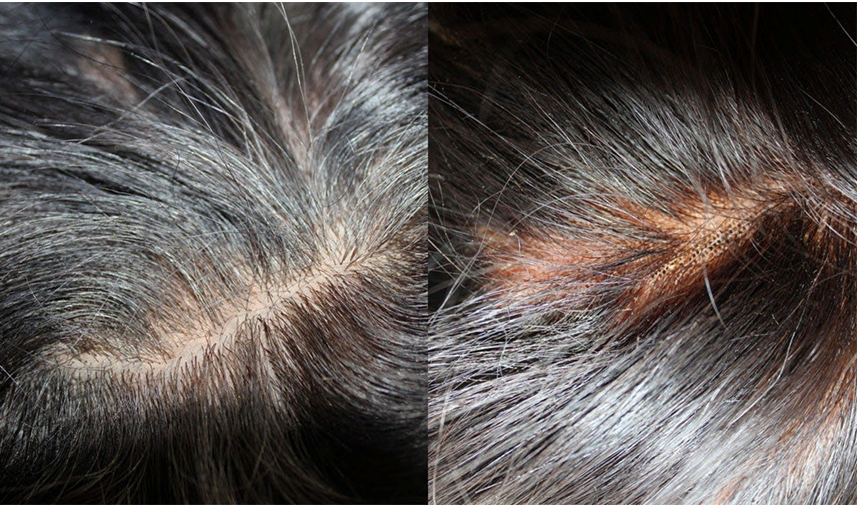
Now that your baby has arrived, your heart is overflowing with love for this small bundle of joy before you. You will soon come to realize that along with love, there is something else that will be overflowing for the next three to four years: diapers.
Read More About: tactical diaper bags
While we are all aware that babies need diapers to keep everything neat and tidy, the magnitude of the number of diapers that a single child will use is lost on most parents (somewhere between early morning feedings and teething).
While cloth diapering is a viable option, one that continues to gain popularity thanks to the advocacy of influencers like Maman Loup, we know that we’ll never see 100% of parents make the switch to reusables.
In Calgary alone, there are approximately 86,000 diaper-aged children. Each child uses approximately 5,000 diapers before being potty trained. Doing the quick math, there are 430,000,000 diapers headed to Calgary landfills over the next three to four years (that’s 107,500,000 per year). Holy crap!
While this number alone is mind-boggling, the real problem lies in what makes a diaper great: their disposable nature also makes them terrible for the environment. A disposable diaper takes approximately 400 years to decompose in a landfill; thus the very first disposable diaper is still sitting somewhere in that first landfill and will be there until 2348!
As the third largest disposable consumer item, diapers are not only rapidly filling our landfills, but also causing subsequent damage to our environment through leachate. Despite being “space spoiled,” building new landfills is costly and not a viable option.
But now the technology that allows for the composting of disposable diapers has arrived in Canada. This tech has been used places like the UK, New Zealand, Australia and others for quite some time with great success. The process shreds the diapers with other organic materials and composts them together in a matter of ten days rather than sitting in a landfill for 400 years. There is no leachate produced in the in-vessel unit, and the material is kept at a constant temperature to kill deadly pathogens, creating a perfect environment for composting bacteria to work their magic. Best of all, the inorganic parts of the diaper are screened away and sent for further processing (recycling, pelletizing and waste-to-energy), leaving only useable, moisture retentive, organic compost!
Look how pleased Miss Cub was about Mark coming to pick up our diapers!
Moving forward, the prudent choice for our children and our planet is to consider using alternative methods of dealing with this ever growing, stinky problem. By choosing to compost your diapers rather than sending them to the landfill, you are choosing to make diapers clean again for your baby—in more ways than one!
April 2021 Update: How does Soiled Diaper Composting compost your diapers?
Here is the update that everyone has been waiting for… drum roll please… Soiled Diapers is finally composting the diapers that have been collected over the last 30 months! How do we do it, you ask? Keep on reading and we’ll explain it…in exhausting detail.
Our composter in all its glory
After we collect your diapers from your house and bring them back to our facility, they get shredded with other organic materials before getting fed into our in-vessel composter. While the material is in the composter it moves back and forth, rests for a bit, moves back and forth, and rests some more.
Materials fed into the hopper
Hopefully you’re not seasick reading that. Once it has been sitting at temperatures above 60°C ,it gets pushed out the back end (see what I did there?) and moves down the pipe to get screened. Screening is where the plastic and trash that we find amongst the other organic material (which we don’t want as it creates more contaminants in the compost) gets removed. This is great for commercial clients because it means we can also prevent prepackaged food waste (i.e. clam shells, bags, and boxes with expired food), from going to the land fill and not being composted.
Filtering unit
During the past 30 months, you would not believe how many people have asked: “How is this is possible since diapers contain so many inorganic materials, and are filled with human waste and pathogens?” Well, here is the nitty gritty…
We tend to use the UK table, but both are very similar. How much of the diaper that stays in the compost, which parts go to be recycled, and which parts, if any, go to the landfill can be shown like this:
- 1% fluff pulp, 32.4% SAP (Super Absorbent Polymer), and 3.8% adhesives help create, and remain in the compost.
- 6% polypropylene, 6% low density polyethylene, 2.2% polyethylene terephthalate can all be recycled.
- 8% “other” material that remains can go to energy plants along with any of the other plastics previously listed above if they are not recycled.
We usually have an estimated 5-15% of waste that is set to the landfill. However, using the aforementioned processing options such as recycling and diversion to energy plants, the entire diaper skips the landfill completely.
Now, human waste is still organic, and can be composted, it just needs to reach temperatures high enough to kill any of the pathogens that aren’t in traditional animal or food waste. All our compost reaches a temperature of greater than 60°C for a number of days before it is fully complete to ensure nothing dangerous is left in it.
Pre-processed feedstock
Still, there are inorganic parts of the diaper that we do not screen out, but that remain in the soil, as mentioned above. SAP (normally sodium polyacrylate in North America) is not compostable, in that we cannot break down the SAP molecules. However, this is also a common polymer found in enriched soils, potting soil, and garden mix commonly sold via garden centres and greenhouses.
Pre-screened compost
When it comes to adhesives, they will reduce the quality of the compost. Unfortunately, there is no avoiding this. However, with the mixing process that we use, adding other organic materials, the PPM of adhesives to compost will be well within any prescribed and governing requirements. Keep in mind that our primary purpose is not to produce the highest quality compost, even though we certainly strive to remain within the Canadian class “A” compost standards. Our purpose is to divert waste from the landfill. The compost produced from diapers is highly moisture retentive, due to the superabsorbent polymer, which makes it ideal for growing mediums. Imagine an energy company taking all the compost we produce in order to fulfil their environmental obligation to return their mine site back to a beautiful and livable environment, or a fertilizer company blending important elements, like sulphur and nitrogen, into our compost to assist farmers with seed germination and crop yield!
Hopefully, after reading this, we’ve done our part to help reassure you that composting disposable diapers isn’t a ton of BS (more like many tons of HS…human sh*t).
It sure is comforting to know that our program is diverting over 100 tons of diapers from the landfill every year, and has the potential to divert nearly 38 thousand tons just in Calgary!
Now, it’s your turn to influence the masses. Follow us on social media, share us (this article, and more) with your friends, families, even people you just met, and most of all, call your local councillor and let them know that Soiled Diapers Composting Services wants to help them make diaper composting available city-wide!
Read More About: tactical diaper bags
Find Out More About Soiled Diaper Composting
Not in Calgary or Edmonton? Start making a stink! Soiled Diaper Composting has an end-goal of expanding across Canada, but the process starts with you. Reach out to your political representatives and let them know that composting diapers is something you want to see in your city!
Think the city of Calgary should be subsidizing diaper composting? After all, it would make a HUGE impact on our current waste diversion goals! Write to your ward councillor!
Soiled Diaper Composting in the news:
See Maman Loup’s TV interview about Soiled Diaper Composting
Redwood Meadows becomes Alberta’s first townsite to compost diapers
Stinky diapers drive dads to launch pickup composting service

